�
Elsevier
Linacre House, Jordon Hill, Oxford OX2 8DP, UK.
Radarweg 29, PO Box 211, 1000 AE Amsterdam, The Netherlands
First edition 2009
Copyright Ó 2009 Elsevier Ltd. All rights reserved
No part of this publication may be reproduced, stored in a retrieval system or transmitted in any form or
by any means electronic, mechanical, photocopying, recording or otherwise without the prior written
permission of the publisher
Permissions may be sought directly from Elsevier’s Science & Technology Rights Department in Oxford,
UK: phone (+44) (0) 1865 843830; fax (+44) (0) 1865 853333; email: permissions@elsevier.com. Alter-
natively you can submit your request online by visiting the Elsevier web site at http://elsevier.com/locate/
permissions, and selecting Obtaining permission to use Elsevier material
Notice
No responsibility is assumed by the publisher for any injury and/or damage to persons or property as
a matter of products liability, negligence or otherwise or from any use or operation of any methods,
products, instructions or ideas contained in the material herein
British Library Cataloguing in Publication Data
Thompson, David
Railway noise and vibration: mechanisms, modelling and means
1. Railroad tracks - Noise 2. Railroad tracks - Vibration
3. Railroad trains - Noise 4. Railroad trains - Vibration
5. Noise control 6. Damping (Mechanics)
I. Title
625.104
Library of Congress Cataloguing in Publication Data
A catalogue record for this book is available from the Library of Congress
Library of Congress Control Number: 2008934415
ISBN-13: 978-0-08-045147-3
Printed and bound in Great Britain
09 10 11 12 13 10 9 8 7 6 5 4 3 2 1
Preface
Speak through the earthquake, wind and fire,
O still small voice of calm!
J.G. Whittier (1807–1892)
When our children were young we took them to the railway station to see off some
visitors. They were excited at the prospect of seeing the trains. But, while we were
waiting, an express train thundered through the station and it was all too much for
their sensitive ears. ‘We don’t like trains now’ they sobbed. ‘Don’t worry’, I said, ‘it’s
my job to make trains quieter’ and that seemed to reassure them. But then they
wanted to know: ‘How do you make trains quieter?’ Well, perhaps this book gives the
answer; it is in any case the result of over 25 years of trying to ‘make trains quieter’.
On graduating in 1980 I was privileged to join British Rail Research. After
a ‘training period’ working on various projects it was suggested to me by Alistair
Gilchrist, then Head of Civil Engineering Research that I should join the Acoustics
Unit. I have to confess that until then I didn’t really know what acoustics was!
I was to work on rolling noise; Alistair suggested that I should be able to solve the
rolling noise problem in six months or a year and then could get on with the ‘really
interesting topic’ of ground vibration. It wasn’t until nearly 20 years later that this
could be fulfilled, although even now rolling noise is not completely ‘solved’.
While at BR I was fortunate to be able to register as an external student at the
Institute of Sound and Vibration Research (ISVR) at the University of Southampton
where I studied for a PhD on the topic of rolling noise modelling. When this was
completed in 1990 I joined the Low Noise Design group at TNO in Delft where I
continued to work mainly on railway noise problems. Then in 1996 I moved ‘back’
to ISVR as a lecturer and latterly as professor. The challenge of teaching courses at
Masters level on topics such as noise control and structural vibration has helped to
put the things I was already doing in railway noise into a more structured academic
context. Railway noise spans a wide range of disciplines within acoustics and vi-
bration, such as multiple degree of freedom systems, analytical modelling of beam
and plate vibration, finite element and boundary element analysis, signal processing,
modal analysis, vibroacoustics and aeroacoustics.
This book brings together research in the area of railway noise and vibration,
much of which has been published in various papers. The intention is to present it in
a way that provides a coherent introduction to the field. While inevitably many of
the references are our own, the book is not just a record of the authors’ work and also
owes much to the many colleagues we have worked with over the years.
It is not practical in a book of this sort to provide an introduction to sound and
vibration for those completely unfamiliar with them. Some basic background to
acoustics is therefore assumed. For those seeking a good introduction to acoustics,
a number of books could be recommended, including Fundamentals of Noise and
�
x
Preface
Vibration, by F. Fahy and J. Walker, published by Spon Press and Sound and
Structural Vibration, by F. Fahy and P. Gardonio, published by Academic Press.
A few words about notation are perhaps in order. For frequency, both f in cycles/s
(Hz) and u, the circular frequency in radians/s, are used, depending on the context.
These are, of course, related by u ¼ 2pf. Complex notation is used with an implicit
time dependence of eiut. Consequently, some published results (based on the al-
ternative e–iut form) have been modified to be consistent with this. The imaginary
unit is denoted by i, rather than j, out of personal preference.
An attempt has been made to use a consistent coordinate system throughout
(explained in Chapter 3). This has necessitated modifying the notation from some
published work that is quoted. Symbols have also been standardised where possible
into a reasonably consistent notation. Many of the example calculations are based on
sets of parameters that have been chosen for illustration purposes. They are not
intended to represent any particular case but are in some sense ‘typical’. By following
the various calculations using this example set of parameters the progression in
modelling is hopefully not distracted by the choice of parameter values.
The frequency range of interest is determined essentially by the audible frequency
range, nominally 20 Hz to 20 kHz (apart from the section on ground vibration where
a lower range is appropriate). As the ear responds to sound logarithmically (a dou-
bling of frequency is a constant musical interval, an octave), logarithmic scales are
widely used for the frequency axis. Also for amplitudes, the decibel scale is widely used.
Where it is not stated, standard reference values have been assumed for decibel values:
2 � 10–5 Pa for sound pressure level, 10–12 W for sound power level. The decibel scale
has its limitations, but it can also be very forgiving – a measurement accuracy of better
than �1 dB is hard to achieve, but this corresponds to �12% in amplitude which in
other fields of engineering would be considered an excessive margin of error.
Frequency response functions (FRF’s) are mostly presented in terms of mobility
(velocity/force) although in places receptance or accelerance are used where published
results are in this form. In common with much current practice in vibration these are
preferred here over mechanical impedance (or dynamic stiffness or apparent mass).
Damping is almost entirely represented by using a hysteretic (constant loss factor)
damping model rather than a viscous model. Justification of this in relation to the
track is given in Chapter 3. For the wheel, the damping is so light that it makes little
difference which damping model is used.
The text deals with mechanisms of sound generation, modelling techniques for
representing them and means of control, particularly those applied at the source.
Hopefully it will also find a readership beyond the railway community. By looking at
noise control principles applied to a real problem it provides an extended worked
example of how to combine various techniques, theoretical and experimental, in first
understanding the problem deeply enough before proposing solutions and testing
them. It attempts to strike a balance between mathematical treatment and practical
examples, between exploring fundamentals and discussing application, between text
and pictures, between equations and physical explanations.
David Thompson
Southampton, October 2008
�
Acknowledgements
There are many people I wish to thank for their help in this project. First of all my
two co-authors, Chris Jones and Pierre-Etienne Gautier. While the book has es-
sentially been my project, in many ways it couldn’t have been written without them.
Their direct contributions are found in Chapters 8, 12, 13 and 14, but their influence
can also be seen throughout the book. Chris was a colleague in my BR days and again
since 1997 at ISVR. It has been a very fruitful and enjoyable collaboration and
friendship. Pierre-Etienne I have known since 1991 when TWINS was first ‘born’.
More recently he has generously invited me to spend several periods of time at SNCF
Direction de l’Innovation et de la Recherche in Paris as ‘visiting professor’ from 2005
onwards and considerable parts of the book have been written during these times.
I am grateful to the ISVR and the University of Southampton for the freedom to
write this. It is a real privilege to have a job that one can enjoy. I wish also to thank
Trinity College, Cambridge for a visiting scholarship in 2005 during which the book
was started, the Department of Engineering at the University of Cambridge for
hosting me during that period and in particular Hugh Hunt and Robin Langley.
The book has also gained much inspiration from the ‘Savoir’ International Course
on Noise and Vibration from Rail Transport Systems which began in 1991 as a col-
laborative venture between ISVR, TNO, SNCF and STUVA and has been run ten
times since then. Initially my fellow-lecturers were Tjeert ten Wolde, John Walker,
Friedrich Kru¨ger and Eric Tassilly. Over the years other colleagues took over lec-
turing and responsibility for the organisation, notably Michael Dittrich as well as
Laurent Guccia and Chris Jones. Each has taught me a lot as well as the delegates on
the course.
Thanks are due to the following people who have supplied photographs, diagrams
and information or who have proofread parts of the text: Olly Bewes, Estelle Bongini,
Steve Cox, Virginie Delavaud, Pieter Dings, Don Eadie, Dieter Hoffmann, Marcel
Janssens, Rick Jones, Toshiki Kitagawa, Jan Lub, Florence Margiocchi, Kerri Parsley,
Franck Poisson and Edwin Verheijen. I am also grateful to the staff at Elsevier,
especially Melanie Benson and Susan Li for all their help and patience.
Looking back, there are many people I wish to thank, especially the people who
have ‘believed’ in me and who have created the environment that has allowed this
work to come to fruition. It was Alistair Gilchrist who first interviewed me for a job
at BR Research and who later pointed me in the direction of acoustics. Many others
at BR Research were influential, including Charles Frederick, Richard Gostling,
Colin Stanworth and Brian Hemsworth. Bob White was a great inspiration as my
PhD supervisor at ISVR. Tjeert ten Wolde encouraged me to move to TNO; it was
a pleasure to work with many colleagues there, especially Jan Verheij, Michael
Dittrich and Marcel Janssens. Through ERRI it was a privilege also to work with
Paul Remington, Nicolas Vincent, Maria Heckl and the late Manfred Heckl. At ISVR,
Joe Hammond was brave enough to take me on; he, Phil Nelson, Steve Elliott and
Mike Brennan have all encouraged me as my ‘line managers’.
�
xii
Acknowledgements
Funding for the research over the years has come from many sources including
British Rail, ORE (later ERRI) through its Committee C163, the Dutch Ministries of
Environment and Transport, the EU, EPSRC and various companies including
Corus, Pandrol, Bombardier, DB, ProRail, SNCF and RFF. All these are gratefully
acknowledged.
The ISVR is a great place to work where I have many supportive colleagues. I want
to thank especially the many research students and post-docs I have had the privilege
of supervising, including: Tianxing Wu, Xiaozhen Sheng, Woo Sun Park, Anand
Thite, Tristan Armstrong, Gang Xie, Ji Woo Yoo, Olly Bewes, Andrew Monk-Steel,
Angela Mu¨ller, Jungsoo Ryue, Toshiki Kitagawa, Zhenyu Huang, Azma Putra,
Nazirah Ahmad, Briony Croft, David Herron, Becky Broadbent, Nuthnapa
Triepaischajonsak. Many of you will see some of your work reflected in the enclosed.
I gladly acknowledge that I couldn’t have done it without you. I also want to mention
Robin Ford who spent a productive sabbatical with us at ISVR working on contact
filtering.
Finally, I want to thank my family and friends for all their support, especially
during the times of stress involved in writing this. Thank you to the many friends at
St John’s church Rownhams. Thank you to Mum and Dad for all you gave me.
Thank you to Alison and Fiona (the real twins) and to Sandra for all your love and
for all the fun we have together. And thank you Claire, simply for everything over the
last 25 years. There is so much I could not have done without you.
�
Copyright Acknowledgements
Figs 1.1, 2.14, 7.7, 7.8, 7.12, 7.15, 7.19, 7.22, 7.25, 7.26, and 7.28 Reprinted from
Proceedings of the Institution of Mechanical Engineers, Part F, Journal of Rail and
Rapid Transit 220(4) D.J. Thompson and P.E. Gautier. A review of research into
wheel/rail rolling noise reduction. 385-408, ISSN: 0954-4097, DOI: 10.1243/
0954409JRRT79, Copyright (2006), with permission from Professional Engineering
Publishing.
Fig. 1.2 Reprinted from Journal of Sound and Vibration 231, D.J. Thompson and
C.J.C. Jones, A review of the modelling of wheel/rail noise generation, 519-536,
Copyright (2000), with permission from Elsevier.
Figs 2.5, 7.11, 7.18 and 7.27 Reprinted from Noise and Vibration from High-Speed
Trains, ed. V.V. Krylov, published by Thomas Telford, Copyright (2001), with
permission from Thomas Telford Ltd.
Fig. 2.7 Reprinted from Journal of Sound and Vibration 193, D.J. Thompson. On the
relationship between wheel and rail surface roughness and rolling noise, 149-160,
Copyright (1996), with permission from Elsevier.
Figs 2.11 and 2.12 Reprinted from Journal of Sound and Vibration 120, D.J.
Thompson. Predictions of acoustic radiation from vibrating wheels and rails, 275-
280, Copyright (1988), with permission from Elsevier.
Fig. 2.13 Reprinted from Proceedings of the Institution of Mechanical Engineers, Part
F, Journal of Rail and Rapid Transit 205(F2) D.J. Thompson. Theoretical modelling
of wheel-rail noise generation. 137-149, ISSN: 0954-4097, DOI: 10.1243/PIME_
PROC_1991_205_227_02, Copyright (1991), with permission from Professional
Engineering Publishing.
Figs 2.14, 2.16a, 9.6 and 14.5 Reproduced from Handbook of Railway Vehicle Dy-
namics, ed. S.D. Iwnicki. Copyright (2006) by Taylor & Francis Group LLC.
Reproduced with permission of Taylor & Francis Group LLC via Copyright
Clearance Center.
Fig. 3.10 Reprinted from Proceedings of the Institution of Mechanical Engineers, Part
F, Journal of Rail and Rapid Transit 213(4), D.J. Thompson, C.J.C. Jones, T.X. Wu
and G. de France, The influence of the non-linear stiffness behaviour of railpads on
the track component of rolling noise. 233-241, ISSN: 0954-4097, DOI: 10.1243/
0954409991531173, Copyright (1999), with permission from Professional Engi-
neering Publishing.
Figs 3.42, 3.43 and 3.44 Reprinted from Acustica united with Acta Acustica 86, T.X.
Wu and D.J. Thompson, The influence of random sleeper spacing and ballast
stiffness on the vibration behaviour of railway track, 313-321, Copyright (2000),
with permission from S. Hirzel Verlag.
�
xiv
Copyright Acknowledgements
Fig. 3.45, 3.46 and 3.47 Reprinted from Journal of Sound and Vibration 203, D.J.
Thompson, Experimental analysis of wave propagation in railway tracks, 867-888,
Copyright (1997), with permission from Elsevier.
Fig. 5.26 Reprinted from Journal of Sound and Vibration 267, D.J. Thompson, The
influence of the contact zone on the excitation of wheel/rail noise, 523-535,
Copyright (2003), with permission from Elsevier.
Figs 6.22, 6.23, 6.24 and 6.25 Reprinted with permission from Journal of the
Acoustical Society of America, 113, D.J. Thompson, C.J.C. Jones, N. Turner, In-
vestigation into the validity of two-dimensional models for sound radiation from
waves in rails, 1965-1974, 2003. Copyright (2003) American Institute of Physics.
Figs 6.27 and 6.28 Reprinted from Journal of Sound and Vibration 293, T. Kitagawa
and D.J. Thompson, Comparison of wheel/rail noise radiation on Japanese railways
using the TWINS model and microphone array measurements, 496-509, Copyright
(2006), with permission from Elsevier.
Figs 6.41, 6.42a, 6.43 and 6.44 Reprinted from Journal of Sound and Vibration 267,
C.J.C. Jones, D.J. Thompson, Extended validation of a theoretical model for railway
rolling noise using novel wheel and track designs, 509-522, 2003, Copyright (2003),
with permission from Elsevier.
Fig. 6.42b Reprinted from Journal of Sound and Vibration 193, D.J. Thompson, P.
Fodiman and H. Mahe´. Experimental validation of the TWINS prediction pro-
gram, part 2: results, 137-147, Copyright (1996), with permission from Elsevier.
Fig. 7.4 Reprinted from Journal of Sound and Vibration 231, D.J. Thompson and P.J.
Remington. The effects of transverse profile on the excitation of wheel/rail noise,
537-548, Copyright (2000), with permission from Elsevier.
Fig. 7.10 Reprinted from Journal of Sound and Vibration 231, D.J. Thompson and P.J.
Remington. The effects of transverse profile on the excitation of wheel/rail noise,
537-548, Copyright (2000), with permission from Elsevier.
Fig. 7.23 Reprinted from Journal of Sound and Vibration 231, C.J.C. Jones and D.J.
Thompson. Rolling noise generated by wheels with visco-elastic layers, 779-790,
Copyright (2000), with permission from Elsevier.
Fig. 7.30 Reprinted from Applied Acoustics 68, D.J. Thompson, C.J.C. Jones, T.P.
Waters and D. Farrington. A tuned damping device for reducing noise from railway
track, 43-57, 2007, Copyright (2007), with permission from Elsevier.
Figs 8.13 and 8.22a Reprinted from Journal of Sound and Vibration 267, C. Talotte,
P.E. Gautier, D.J. Thompson, C. Hanson, Identification, modelling and reduction
potential of railway noise sources: a critical survey, 447-468, 2003, Copyright
(2003), with permission from Elsevier.
Fig. 8.15 Reprinted from Journal of Sound and Vibration 293, K. Nagakura, Locali-
zation of aerodynamic noise sources of Shinkansen trains, 547-565, Copyright
(2006), with permission from Elsevier.
Fig. 8.17 Reprinted from Journal of Sound and Vibration 231, T. Kitagawa and K.
Nagakura, Aerodynamic noise generated by Shinkansen cars, 913-924, Copyright
(2000), with permission from Elsevier.
�
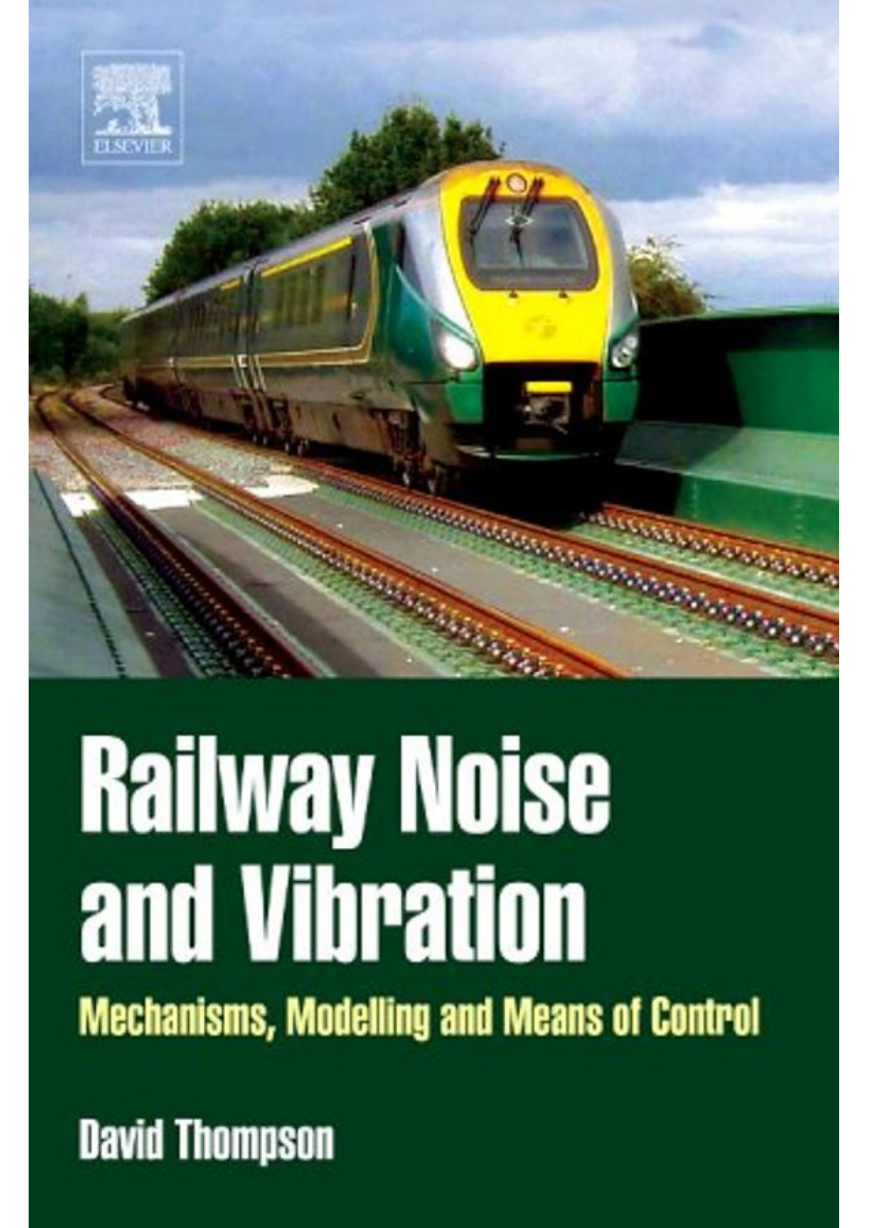

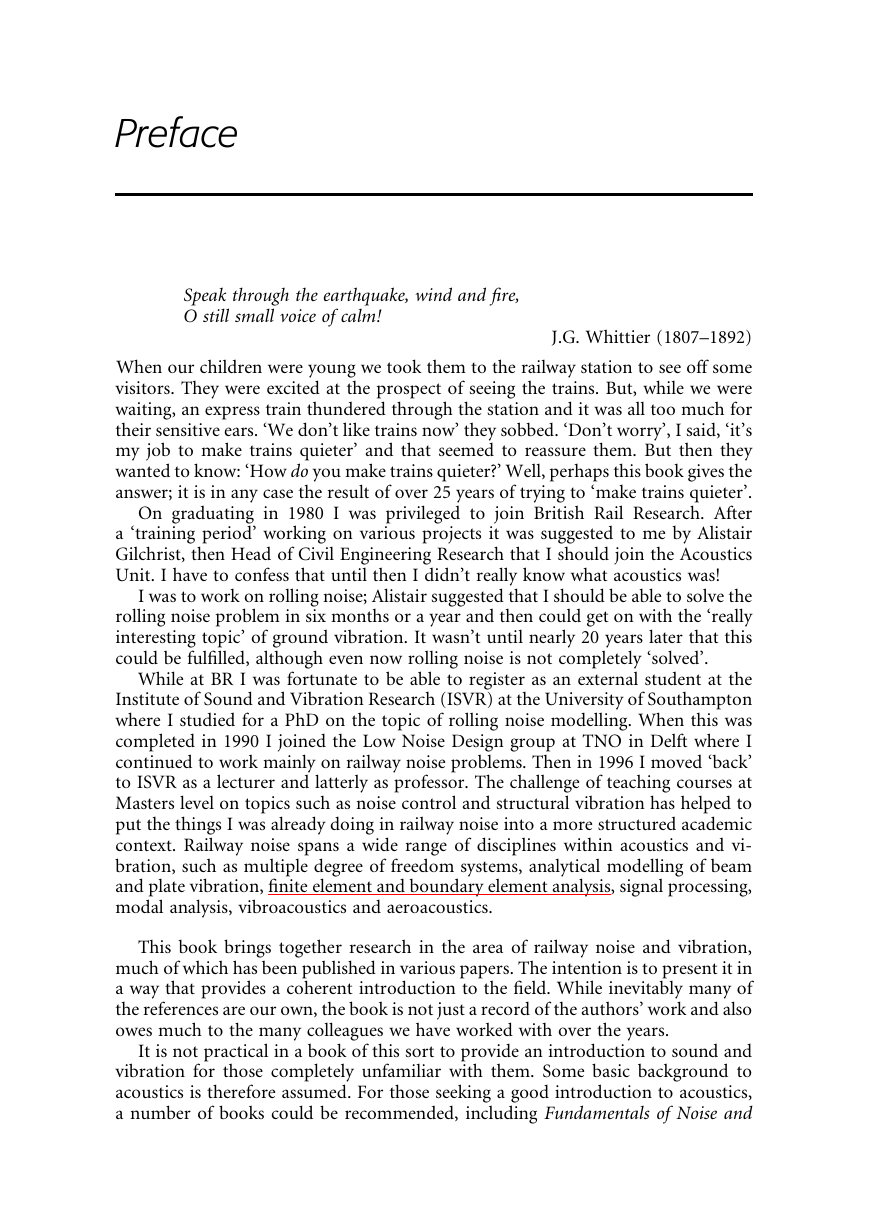
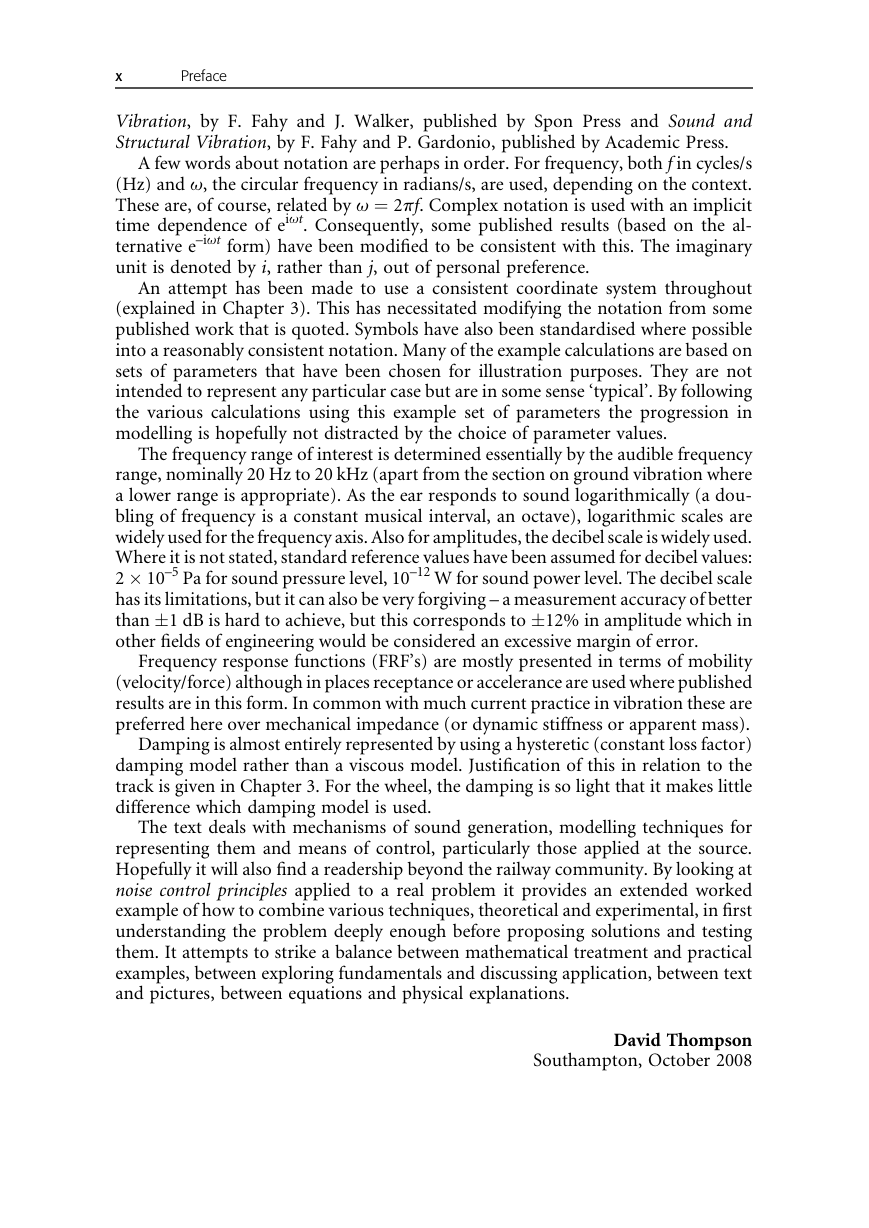
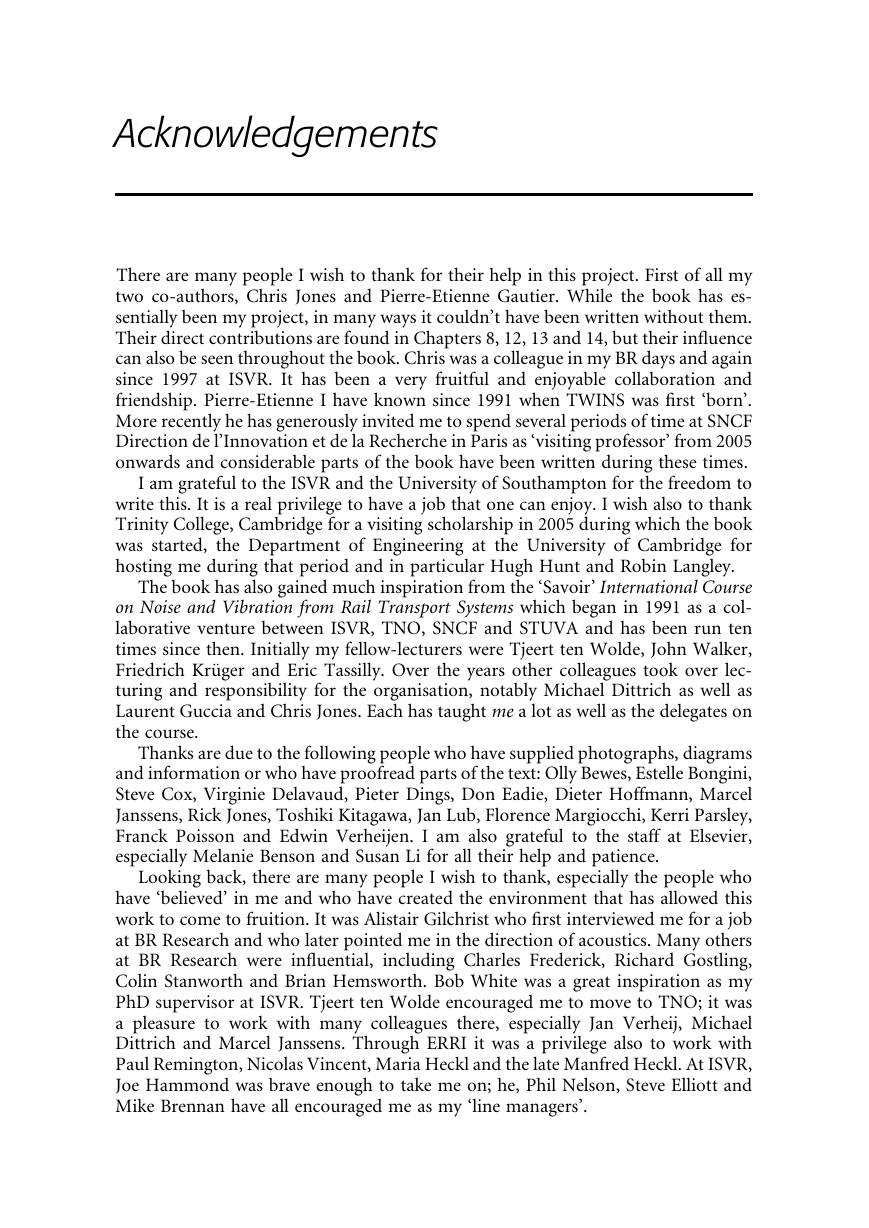
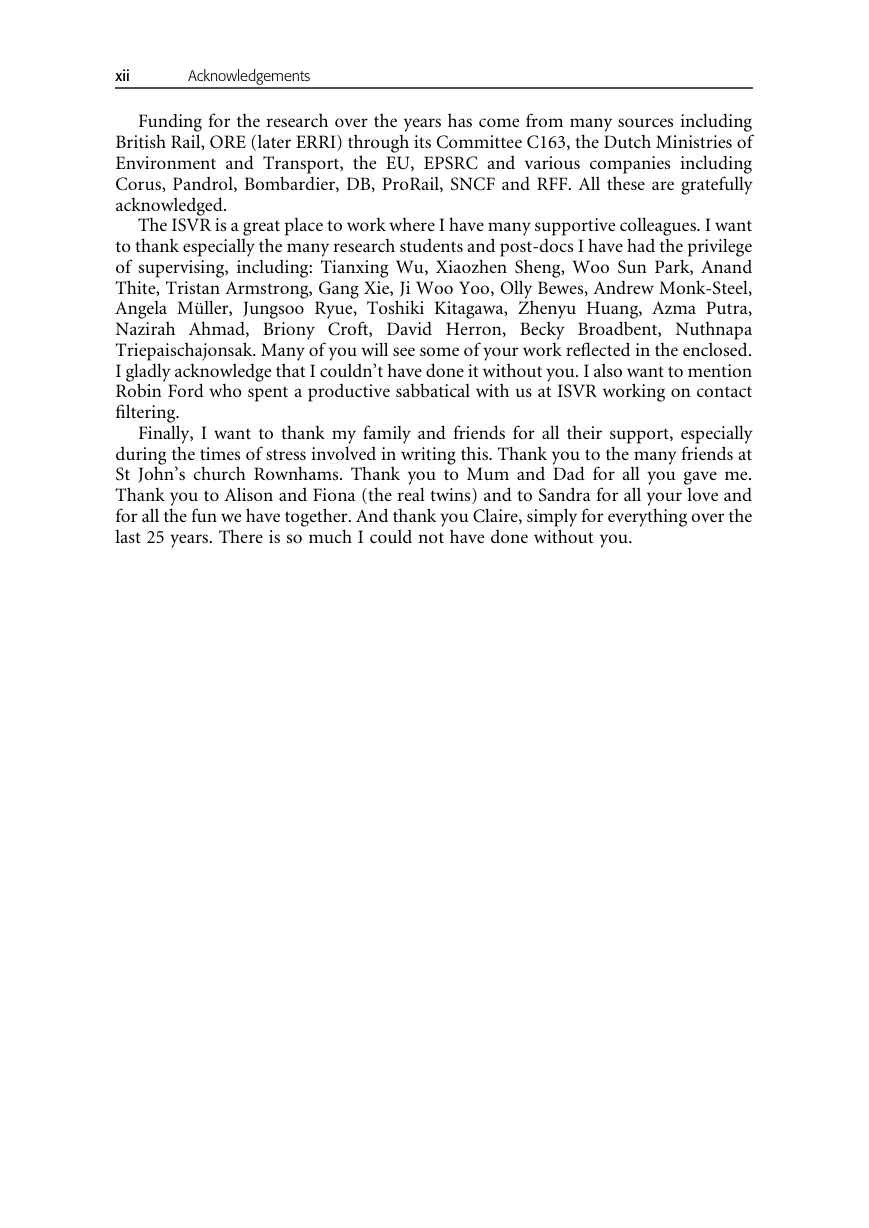
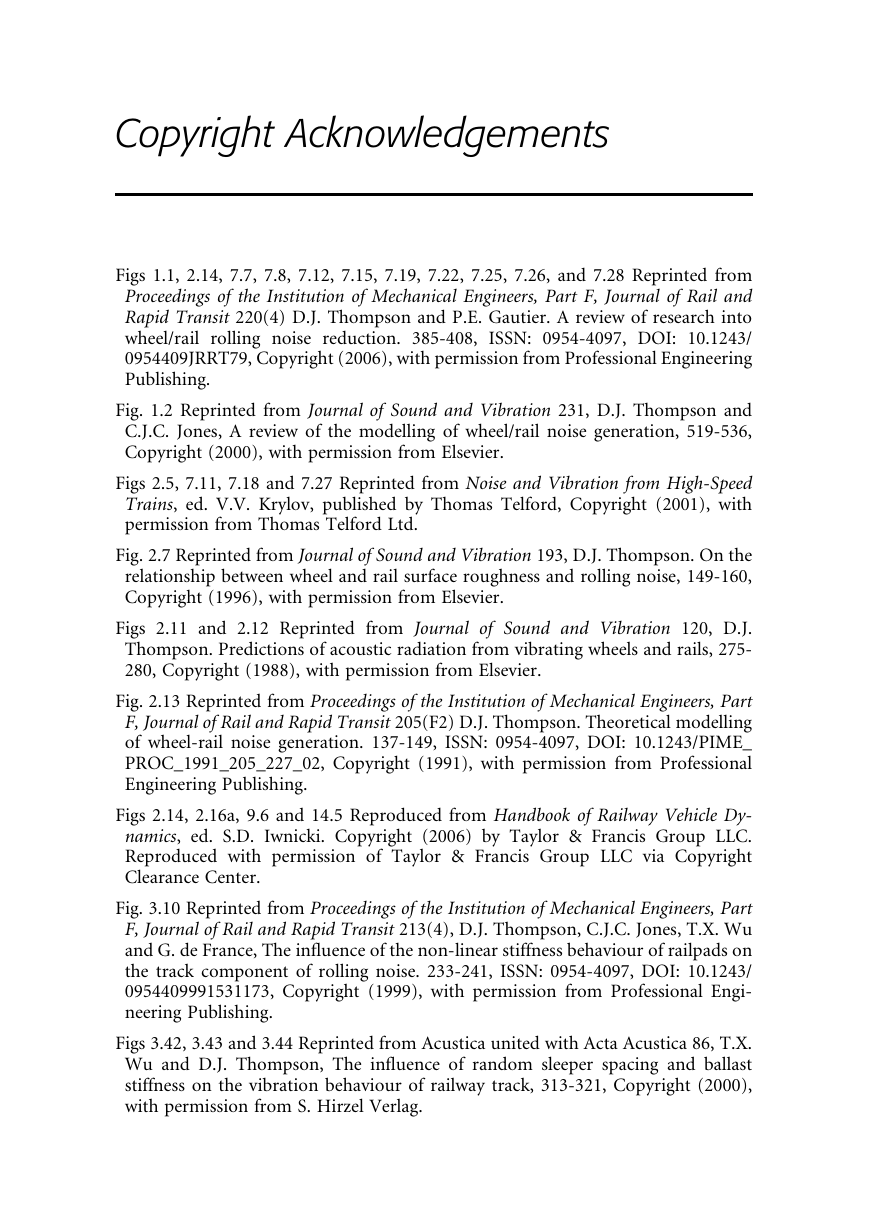









 2023年江西萍乡中考道德与法治真题及答案.doc
2023年江西萍乡中考道德与法治真题及答案.doc 2012年重庆南川中考生物真题及答案.doc
2012年重庆南川中考生物真题及答案.doc 2013年江西师范大学地理学综合及文艺理论基础考研真题.doc
2013年江西师范大学地理学综合及文艺理论基础考研真题.doc 2020年四川甘孜小升初语文真题及答案I卷.doc
2020年四川甘孜小升初语文真题及答案I卷.doc 2020年注册岩土工程师专业基础考试真题及答案.doc
2020年注册岩土工程师专业基础考试真题及答案.doc 2023-2024学年福建省厦门市九年级上学期数学月考试题及答案.doc
2023-2024学年福建省厦门市九年级上学期数学月考试题及答案.doc 2021-2022学年辽宁省沈阳市大东区九年级上学期语文期末试题及答案.doc
2021-2022学年辽宁省沈阳市大东区九年级上学期语文期末试题及答案.doc 2022-2023学年北京东城区初三第一学期物理期末试卷及答案.doc
2022-2023学年北京东城区初三第一学期物理期末试卷及答案.doc 2018上半年江西教师资格初中地理学科知识与教学能力真题及答案.doc
2018上半年江西教师资格初中地理学科知识与教学能力真题及答案.doc 2012年河北国家公务员申论考试真题及答案-省级.doc
2012年河北国家公务员申论考试真题及答案-省级.doc 2020-2021学年江苏省扬州市江都区邵樊片九年级上学期数学第一次质量检测试题及答案.doc
2020-2021学年江苏省扬州市江都区邵樊片九年级上学期数学第一次质量检测试题及答案.doc 2022下半年黑龙江教师资格证中学综合素质真题及答案.doc
2022下半年黑龙江教师资格证中学综合素质真题及答案.doc